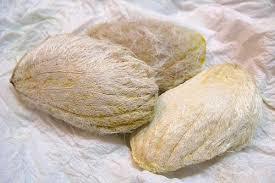Optimization of drying parameters for mango seed kernels using central composite design (2015)

Abstract: The combined effect of drying temperature and time was evaluated on residual water content, yield of oil extraction, total phenolic compounds and antioxidant activity of seed kernel from a Cameroonian local variety of mango (Local Ngaoundere). Response surface methodology (RSM) using central composite design (CCD) as tool, was used to develop, validate and optimize statistical models in order to establish the impact of the drying parameters (temperature and time) either alone or in combination. It was shown that drying temperature individually in its first order (X1) contributed 30.81, 21.11, 41.28 and 33.24% while drying time individually in its first order (X2) contributed 39.91, 15.12, 29.92 and 25.87% for residual water content, yield of oil extraction, total phenolic components and antioxidant activity respectively. The increase of drying temperature increased antioxidant activity while the other physicochemical characteristics such as water content, yield of oil extraction and total phenolic components decreased. Concerning drying time, only water content was reduced with an increase of that factor. The synergetic effect of drying temperature and time was effective only for antioxidant activity. A compromise for optimization were then fixed for water content ≤ 10% w/w; oil content ≥ 9% w/w; total polyphenols ≥ 1 mg/g and antioxidant activity ≥ 1000 mg AAE/100 g DM. A simulation for optimization gave, for 60 H and 60°C for drying time and temperature respectively permitted to obtain 4.10% w/w, 9.53% w/w, 1340.28 mg AAE/100 g DM and 1.16 mg/g for water content, oil content, antioxidant activity and total polyphenols respectively.
Optimization of drying parameters for mango seed kernels using central composite design.pdf


